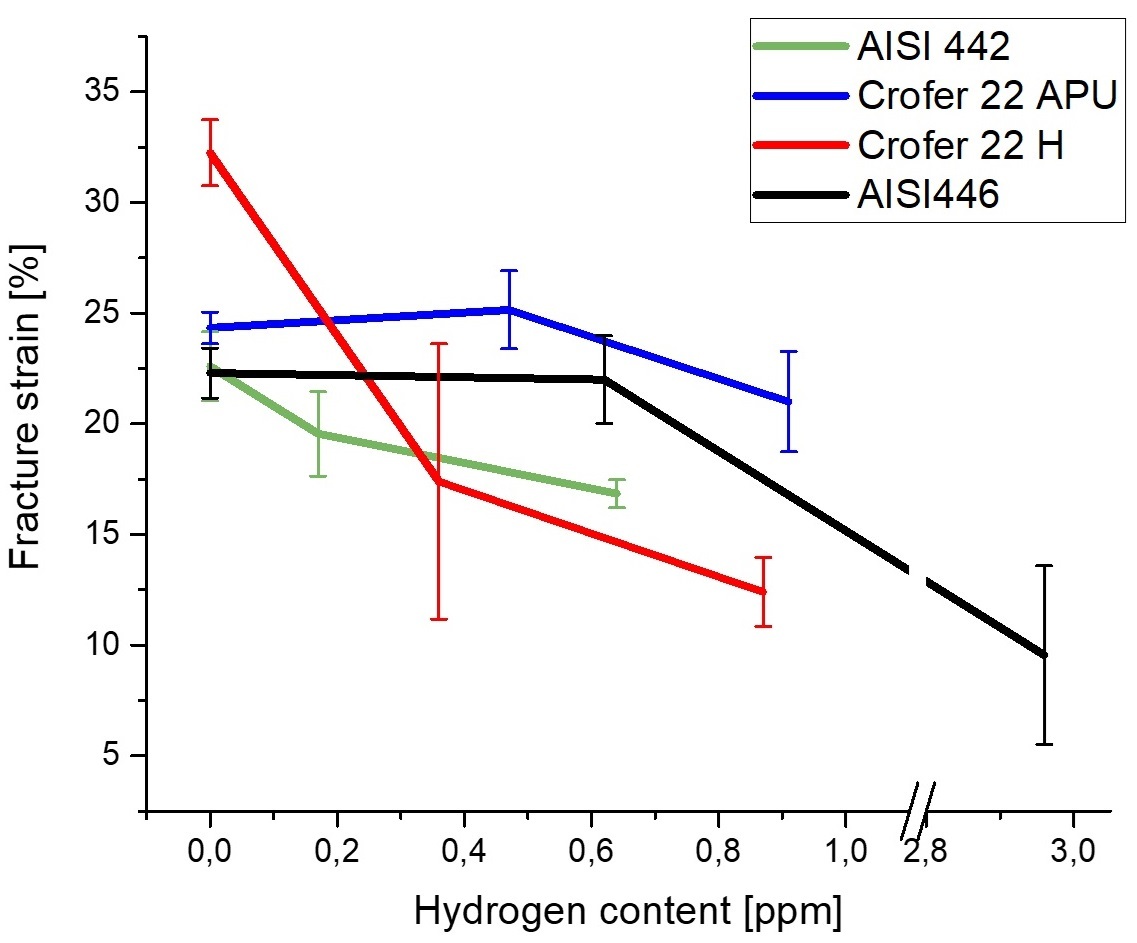D. Kniep, S. Schewe, M. Rudolphi, M.C. Galetz
International Journal of Hydrogen Energy (2024), DOI: 10.1016/j.ijhydene.2024.03.337

This study investigates the mechanical properties of four chemically similar ferritic stainless steels, while exposed to hydrogen in order to assess their potential as interconnect materials. To assess the diffusion behavior, the materials were subjected to hydrogen permeation tests. It was shown that the grain size, along with the hardness, significantly influences the hydrogen diffusion coefficient. Additionally, the interconnect materials were subjected to tensile tests using notched and smooth specimens, respectively, in both hydrogen-charged and uncharged conditions. In two different cathodic charging scenarios, resulting in different levels of hydrogen within the material, all ferritic interconnect steels exhibit a reduction in fracture strain and a decline in ultimate tensile strength. SEM analysis provides further confirmation of hydrogen embrittlement in the charged samples through a predominant cleavage microstructure, while the uncharged samples exhibit extensive areas of ductile fracture in comparison.